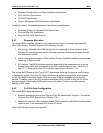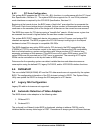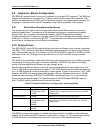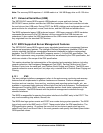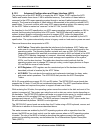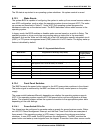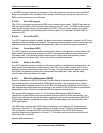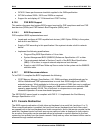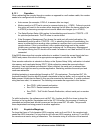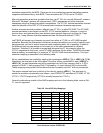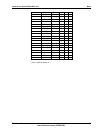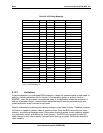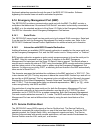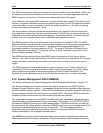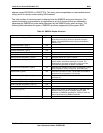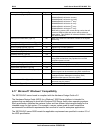
Intel® Server Board SE7501WV2 TPS BIOS
Revision 1.0
Intel reference number C25653-001
83
6.13.1 Operation
When redirecting the console through a modem as opposed to a null modem cable, the modem
needs to be configured with the following:
• Auto-answer (for example, ATS0=2, to answer after two rings)
• Modem reaction to DTR set to return to command state (e.g., AT&D1). Failure to provide
this option will result in the modem either dropping the link when the server reboots (as
in AT&D0) or becoming unresponsive to server baud rate changes (as in AT&D2).
• The Setup/System Setup Utility option for handshaking must be set to CTS/RTS + CD
for optimum performance. The CD refers to carrier detect.
• If the Emergency Management Port shares the serial port with serial redirection, the
handshaking must be set to CTS/RTS + CD. In selecting this form of handshaking, the
server is prevented from sending video updates to a modem that is not connected to a
remote modem. If this is not selected, video update data being sent to the modem
inhibits many modems from answering an incoming call. An Emergency Management
Port option utilizing the CD should not be used if a modem is not used and the CD is not
connected.
If the BIOS determines that console redirection is enabled, it reads the current baud rate from
CMOS and passes this value to the appropriate management controller via the IPMB.
Once console redirection is selected via Setup or the System Setup Utility, redirection is loaded
into memory and is activated during POST. While redirection cannot be removed without
rebooting, it can be inhibited and restarted. When inhibited, the serial port is released from
redirection and might be used by another application. Restarting reclaims the serial port and
continues redirection.
Inhibiting/restarting is accomplished through an INT 16h mechanism. The standard INT 16h
(keyboard handler) function ah=05h places a keystroke in the key buffer, as if an actual key has
been pressed. Keystrokes buffered in this way are examined by redirection. If a valid command
string has been sent, it is executed. The following commands are supported in this fashion:
• Esc-CDZ0: Inhibit console redirection
• Esc-CDZ1: Restart console redirection
• Esc-CDZ2 - “Soft” Inhibit Console Redirection, without serial port or modem
reset
To inhibit redirection, the software must call INT 16h, function ah=05h five times to place the
five keys in the key buffer. Keystrokes sent to the INT 16h buffers for purposes of invoking a
command are buffered and should be removed via the normal INT 16h calls. This prevents
these keystrokes from being passed to another application.
6.13.2 Keystroke Mappings
For keys that have a 7-bit character ASCII mapping, such as A and Ctrl-A, the remote simply
sends the ASCII character. For keys that do not have an ASCII mapping, such as F1 and Alt-A,
the remote must send a string of characters. This character string is a function of the terminal



